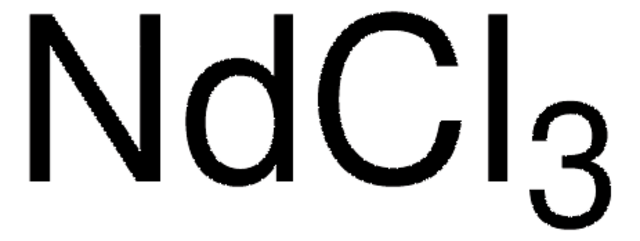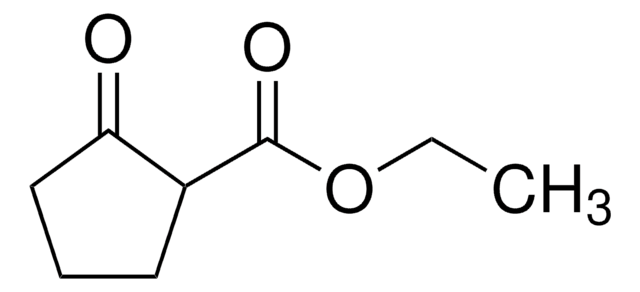Wichtige Dokumente
228931
Cer(III)-chlorid Heptahydrat
99.9% trace metals basis
Synonym(e):
Cerchlorid
About This Item
Empfohlene Produkte
Qualität
for analytical purposes
Qualitätsniveau
Assay
99.9% trace metals basis
Form
crystals and lumps
Eignung der Reaktion
reagent type: catalyst
core: cerium
Verunreinigungen
≤1500.0 ppm Trace Rare Earth Analysis
Dichte
~3.94 g/mL at 25 °C (lit.)
SMILES String
[H]O[H].[H]O[H].[H]O[H].[H]O[H].[H]O[H].[H]O[H].[H]O[H].Cl[Ce](Cl)Cl
InChI
1S/Ce.3ClH.7H2O/h;3*1H;7*1H2/q+3;;;;;;;;;;/p-3
InChIKey
KPZSTOVTJYRDIO-UHFFFAOYSA-K
Suchen Sie nach ähnlichen Produkten? Aufrufen Leitfaden zum Produktvergleich
Allgemeine Beschreibung
Anwendung
- As a precursor to prepare cerium oxide nanoparticles for biomedical applications and photocatalytic degradation.
- As a solution to fabricate thin films of CeO2 on glass substrates by the spray pyrolysis process.
- As a dopant to fabricate ZnO and CeO2 nanocrystals for electrochemical sensing of H2O2 and photocatalytic degradation of Rhodamine B and Congo red dyes.
- As an additive to prepare corrosion-inhibiting formulations and coatings.
- To synthesize carbon nanofiber composites to fabricate high-temperature polymer electrolyte membrane fuel cell cathodes.
- As a support for the combination of cerium(III)chloride heptahydrate and sodium iodide supported on silica gel to promoteMichael-type additions. These catalysts are used to convert from indolesand nitroalkenes to 2-indolyl-1-nitroalkane derivatives in good yields.
Signalwort
Danger
H-Sätze
Gefahreneinstufungen
Aquatic Acute 1 - Aquatic Chronic 1 - Eye Dam. 1 - Skin Corr. 1C
Lagerklassenschlüssel
8A - Combustible corrosive hazardous materials
WGK
WGK 3
Persönliche Schutzausrüstung
dust mask type N95 (US), Eyeshields, Gloves
Hier finden Sie alle aktuellen Versionen:
Besitzen Sie dieses Produkt bereits?
In der Dokumentenbibliothek finden Sie die Dokumentation zu den Produkten, die Sie kürzlich erworben haben.
Kunden haben sich ebenfalls angesehen
Artikel
The rare earth elements impact nearly everyone in the world. All of the people living in advanced technological countries and almost all those living in third world countries utilize the rare earths in their everyday living—the car that one drives (gasoline is refined from oil using rare earth catalysts and catalytic converters reduce the polluting emissions from the automotive exhaust), watching the news on TV (the red and green colors in TV screens), the telephones and computers we use to communicate (the permanent magnets in speakers and disc drives), just to name a few examples.
Unser Team von Wissenschaftlern verfügt über Erfahrung in allen Forschungsbereichen einschließlich Life Science, Materialwissenschaften, chemischer Synthese, Chromatographie, Analytik und vielen mehr..
Setzen Sie sich mit dem technischen Dienst in Verbindung.













